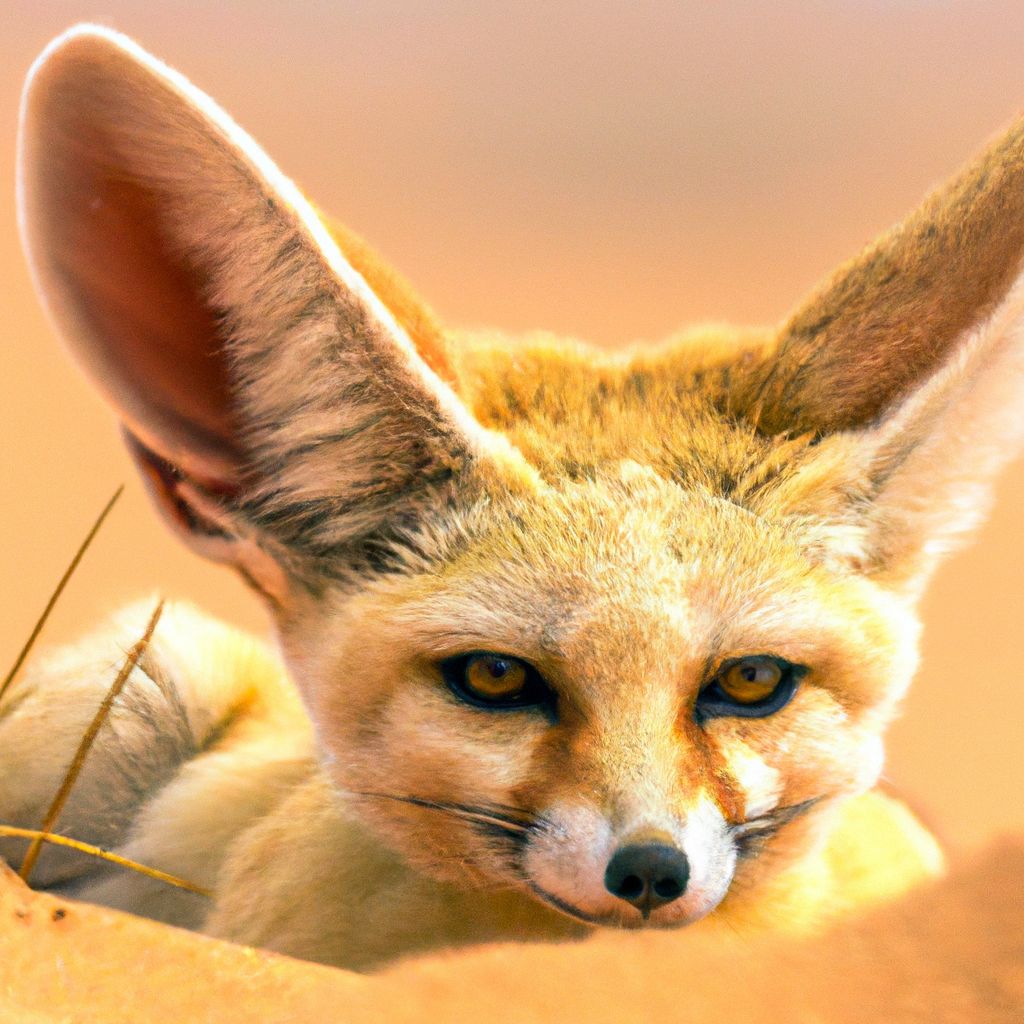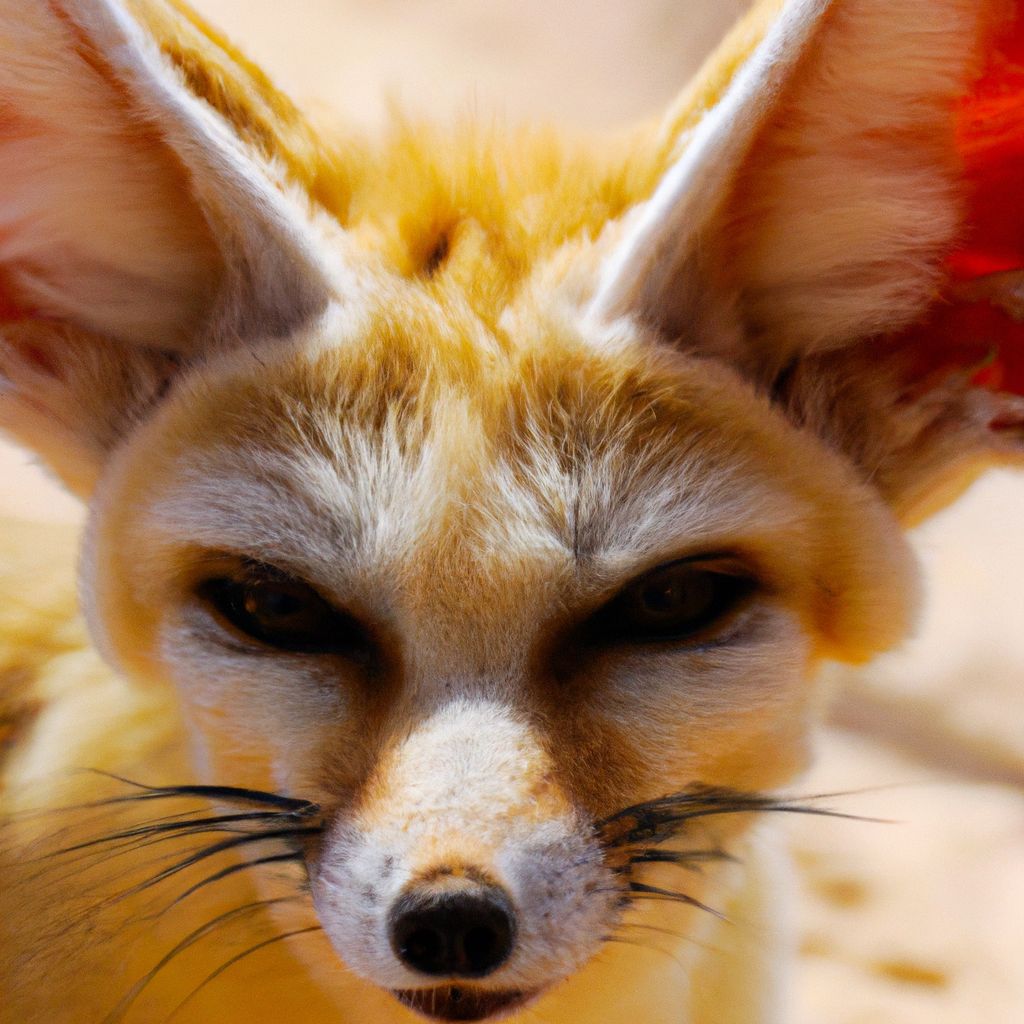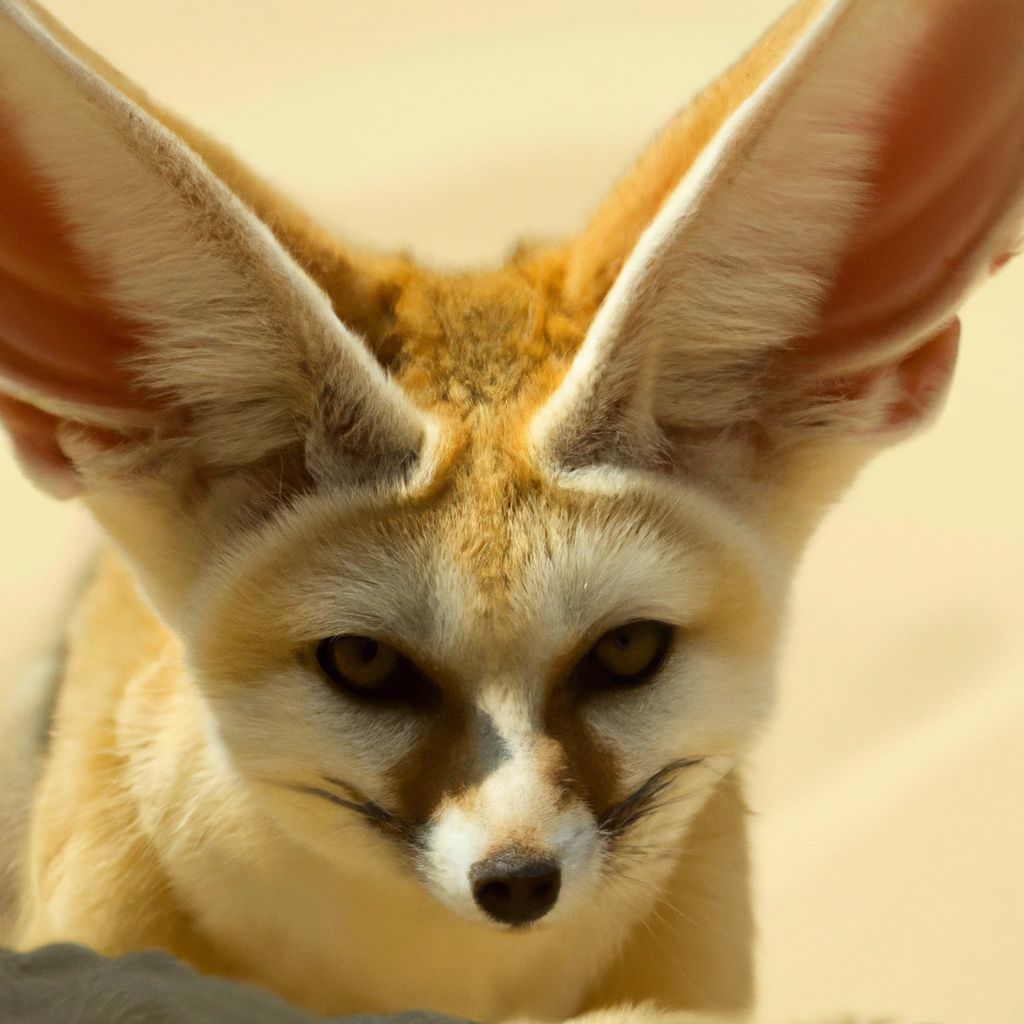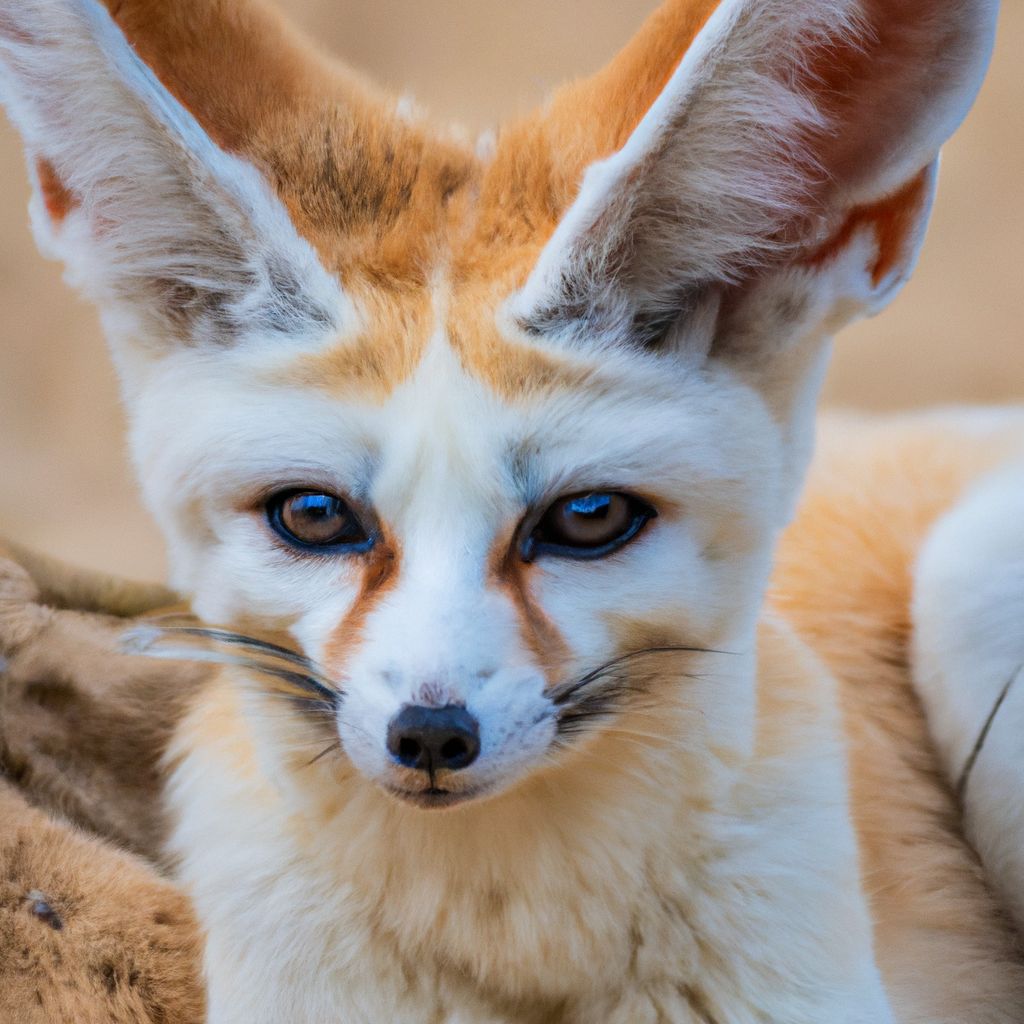The Fennec Fox is a fascinating species that is native to the deserts of North Africa. Known for its unique characteristics and adaptations to desert life, the Fennec Fox has captured the attention of researchers and wildlife enthusiasts alike.
Let’s delve into the world of the Fennec Fox and explore its habitat, physical characteristics, behavior, diet, reproduction, conservation status, and the efforts being made to protect this remarkable species.
The Fennec Fox is primarily found in the Sahara Desert and other arid regions of North Africa. Its distinctive features make it well-suited to its desert habitat. With its large ears, nocturnal behavior, and adaptations such as thick fur and foot pads, the Fennec Fox has successfully adapted to survive in extreme desert conditions.
These adaptations help the Fennec Fox in several ways. The large ears aid in dissipating heat and enhancing hearing, allowing them to locate prey and avoid predators. Being nocturnal allows them to avoid the scorching daytime heat, while their thick fur and foot pads provide insulation from the hot sand.
In terms of behavior and social structure, Fennec Foxes are known to be solitary and territorial creatures. They communicate using a range of vocalizations and scent marking, helping them establish boundaries and attract mates.
When it comes to their diet, Fennec Foxes are omnivorous, feeding on a variety of food sources including small rodents, insects, birds, eggs, and plant matter. Their diet is well-adapted to the limited food resources available in their arid environment.
The reproductive cycle of the Fennec Fox is influenced by the availability of food resources. They have a monogamous mating system and typically produce a single litter of 2-5 pups each year. The young Fennec Foxes develop rapidly and become independent within a few months.
Unfortunately, the Fennec Fox faces several threats to its survival. Habitat loss due to human activities, predation from larger carnivores, and the illegal pet trade pose significant challenges to its conservation. In response, efforts are being made to protect and restore the Fennec Fox’s habitat, raise public awareness about its importance, and combat the illegal pet trade.
By understanding the unique adaptations and ecological significance of the Fennec Fox, we can contribute to its conservation and ensure the continued existence of this remarkable species in North Africa’s deserts.
Contents
- 1 Habitat and Distribution of the Fennec Fox
- 2 Physical Characteristics of the Fennec Fox
- 3 Adaptations of the Fennec Fox to Desert Life
- 4 Behavior and Social Structure of the Fennec Fox
- 5 Diet and Feeding Habits of the Fennec Fox
- 6 Reproduction and Life Cycle of the Fennec Fox
- 7 Threats and Conservation Status of the Fennec Fox
- 8 Efforts in Fennec Fox Conservation
- 9 Frequently Asked Questions
- 9.1 1. What is a Fennec fox and where is it found?
- 9.2 2. What are the unique physical features of a Fennec fox?
- 9.3 3. Are Fennec foxes able to adapt to the arid desert environment?
- 9.4 4. How do Fennec foxes mark their territory?
- 9.5 5. Are Fennec foxes migratory animals?
- 9.6 6. What are the main threats to Fennec fox populations?
Habitat and Distribution of the Fennec Fox

Photo Credits: Foxauthority.Com by Wayne Young
The Fennec Fox primarily inhabits sandy regions of North Africa, including the Sahara Desert. These small, nocturnal foxes are well-adapted to desert life, with large, sensitive ears to locate underground prey and insulating fur to protect against extreme temperatures. They are mainly found in Morocco, Algeria, Tunisia, Libya, and Egypt, preferring sandy dune habitats with burrows for shelter and raising their young.
Fennec Foxes have a small home range, feeding on insects, small rodents, birds, and vegetation in their habitat. They can survive with little water by obtaining hydration from their food. Habitat loss and illegal pet trade have posed challenges to their population in recent years. Conservation efforts aim to protect their natural habitat and discourage capture and captivity.
In ancient Egyptian mythology, the Fennec Fox was seen as a messenger from the gods, symbolizing wisdom and cunning. Tribes in the Sahara Desert also consider them guardians and bringers of good fortune. These fascinating creatures have captivated humans for centuries with their adaptations to the harsh desert environment.
Physical Characteristics of the Fennec Fox

Photo Credits: Foxauthority.Com by Jerry Miller
The Fennec Fox characteristics are well-adapted to its desert habitat.
The Physical Characteristics of the Fennec Fox have evolved to thrive in the harsh desert environment. Its large ears help dissipate heat, small size provides easy maneuverability, and camouflage fur helps it blend into the surroundings. Specialized paws and tail enable the fox to navigate the sandy terrain effortlessly. Understanding these physical attributes helps us appreciate the remarkable adaptations of the Fennec Fox to its unique habitat.
Adaptations of the Fennec Fox to Desert Life
Did you know that the adorable Fennec Fox has some remarkable adaptations that help it thrive in the harsh desert environment of North Africa? In this section, we’ll delve into the unique characteristics of this fascinating creature. From its oversized ears that serve a specific purpose to its nocturnal behavior, as well as its thick fur and specialized foot pads, we’ll explore how these adaptations play an essential role in the desert life of the Fennec Fox. Prepare to be amazed by their incredible survival strategies!
Large Ears
The Fennec Fox’s large ears are crucial for its survival in the desert. These extraordinary adaptations serve multiple purposes: thermoregulation, improved hearing, and communication.
Thermoregulation is one of the key functions of the fox’s large ears. They play a vital role in regulating the fox’s body temperature by dissipating heat during hot periods and conserving body heat at night.
The size of the ears also contributes to improved hearing for the fox. It allows them to detect faint sounds in the desert, which is beneficial for locating prey and avoiding predators.
The fox utilizes its ears for communication. The position of the ears can convey messages to other foxes. Upright ears may indicate aggression or alertness, while flattened ears might signal submission or fear.
Despite being one of the smallest fox species, the Fennec Fox thrives in the harsh desert environment thanks to its remarkable adaptations. Its large ears provide advantages in temperature regulation, hearing abilities, and communication within its social group.
Nocturnal Behavior
The fennec fox is known for its nocturnal behavior, as it is active at night and sleeps during the day. This unique behavior allows them to hunt for food using their keen hearing and exceptional vision in the darkness of the night. Although mainly solitary, the fennec fox may form pair bonds during the breeding season, showcasing their social behaviors even in their nocturnal lifestyle.
During the night, fennec foxes communicate with each other through various vocalizations such as barks, screams, and purrs. These sounds serve as a way for them to interact and establish their presence in the darkness. Their large and sensitive ears play a crucial role in helping them locate prey and avoid potential predators in their nocturnal environment.
Pro-tip: If you happen to encounter a fennec fox in the wild, it is important to respect their nocturnal behavior. Keeping a safe distance and observing them from afar without disturbing their natural activities is key. By doing so, we ensure their well-being and allow them to thrive undisturbed in their nocturnal habitat.
Thick Fur and Foot Pads
Thick fur and foot pads play a crucial role in aiding the Fennec Fox in its survival within the desert. These natural attributes offer insulation, camouflage, protection, efficient movement, and silent mobility. The thick fur acts as a barrier, keeping the fox warm, camouflaged, and safeguarding its sensitive ears and eyes from the abrasive desert sand.
Meanwhile, the foot pads serve to prevent burns and provide the fox with the necessary traction to navigate the harsh desert Fennec Fox terrain.
Undoubtedly, these remarkable adaptations have contributed significantly to the Fennec Fox’s ability to thrive in its desert habitat.
Behavior and Social Structure of the Fennec Fox

Photo Credits: Foxauthority.Com by Austin Gonzalez
The behavior and social structure of the Fennec Fox are fascinating. These small animals live in tight-knit family groups known as “packs”. These packs consist of a breeding pair, their previous year’s offspring, and sometimes other unrelated adults.
Within the pack, there is a clear hierarchy with the breeding pair at the top. They establish their dominance through various means, including vocalizations, scent marking, and physical interactions. Communication is vital for Fennec Foxes, and they use a range of vocalizations to communicate with each other and establish their territories.
Fennec Foxes are primarily nocturnal, which allows them to avoid the scorching heat of the desert during the day when temperatures can exceed 100 degrees Fahrenheit. Their large ears help them regulate their body temperature and locate prey underground. These foxes are opportunistic omnivores, meaning they eat a wide variety of food including insects, small mammals, birds, fruits, and vegetation.
One of the Fennec Fox’s remarkable adaptations is their ability to dig complex burrows. These burrows serve as shelter and protection from predators and the extreme desert temperatures. The mating season for Fennec Foxes occurs between January and February, and litters of one to five pups are born. Both parents play an active role in raising the young, providing them with food and protection.
Fennec Foxes display monogamous behavior and form long-term pair bonds with their mates. These strong social connections contribute to the stability and cohesiveness of their packs. Understanding the behavior and social structure of the Fennec Fox gives us a greater appreciation for their unique adaptations and their ability to thrive in the challenging desert environments of North Africa.
Diet and Feeding Habits of the Fennec Fox
The Fennec Fox possesses an intriguing and distinctive diet, encompassing insects, small rodents, and occasional birds and eggs. It also incorporates desert vegetation, like fruits and leaves, albeit this constitutes a minor proportion of its overall diet.
Functioning as an active hunter, the Fennec Fox relies on its acute hearing to locate prey and swiftly attacks using its razor-sharp teeth and claws. Given its predominantly nocturnal nature, it engages in hunting and foraging activities during the cooler nighttime hours.
One remarkable characteristic of the Fennec Fox is its diverse and adaptable diet, enabling it to thrive in the unforgiving desert environment. By deriving most of its moisture from the food it consumes, it can survive in areas where water sources are limited.
It is worth mentioning that each Fennec Fox displays its own distinctive feeding habits and preferred diet. While some specialize in targeting specific prey, others demonstrate a more opportunistic approach, consuming whatever sustenance is available. This adaptability plays a pivotal role in their survival within the desert habitat.
Reproduction and Life Cycle of the Fennec Fox

Photo Credits: Foxauthority.Com by Thomas Hill
Reproduction and Life Cycle of the Fennec Fox
The Fennec Fox has a fascinating reproduction and life cycle. Here are some key aspects to consider:
1. Mating season: Fennec Foxes mate in January and February. Males actively search for females to mate with during this time.
2. Gestation period: The gestation period for Fennec Foxes is about 50 to 52 days. The female gives birth to a litter of pups, usually around 2 to 5 individuals.
3. Maternal care: Identifying the Predators of Foxes: A Comprehensive Guide Fennec Fox mothers are dedicated to caring for their offspring. They provide warmth, nourishment, and protection from dangers.
4. Development: The pups are born blind and helpless. Their eyes open after about 9 to 10 days, and they start venturing out of the den at around 3 weeks old.
5. Independence: Fennec Fox pups are fully weaned by 70 to 85 days old. They develop hunting skills and become more independent from their mother.
6. Social structure: Fennec Foxes are generally solitary, but they form small family groups consisting of an adult pair and their offspring. These groups stay together for a few months before the young ones disperse.
Understanding the reproduction and life cycle of the Fennec Fox gives insight into their behavior and adaptation to the desert habitat. It’s remarkable how these tiny foxes thrive in harsh conditions.
To sum up, the reproduction and life cycle of the Fennec Fox is complex and intriguing. Studying and appreciating these aspects helps us understand these remarkable creatures and their survival strategies in the Fennec Fox genus in the North African desert.
+
+
+
Threats and Conservation Status of the Fennec Fox
The Fennec Fox of North Africa faces various challenges that impact its survival. From the loss of its natural habitat to the threats posed by predators and the illegal pet trade, this section reveals the grim realities the Fennec Fox encounters. Delve into the delicate balance it strives to maintain in the face of habitat loss, the ever-present danger from predators, and the detrimental effects of the illegal pet trade. Brace yourself for an eye-opening exploration of the threats and conservation status of this remarkable creature.
Habitat Loss
Habitat loss is a significant threat to the fennec fox population. Human activities, such as settlements, expansion of agriculture, and development of infrastructure, are the main causes behind it. Deforestation and conversion of land for agriculture have resulted in substantial loss of habitat. When forests are cleared for urban areas or farmland, the fennec fox loses its natural habitat and is pushed into smaller and isolated areas.
These losses in habitat have serious consequences for the fennec fox populations. The reduced and fragmented habitats make it challenging for them to find food and establish territories. It increases their vulnerability to predators and disturbances caused by humans.
In order to tackle habitat loss, conservation efforts should primarily focus on protection and restoration. By establishing protected areas, the remaining fennec fox habitats can be safeguarded, preventing further encroachment. Restoration programs are also crucial for reclaiming degraded habitats and creating corridors between fragmented areas to facilitate movement and gene flow.
Predators
Predators
The Fennec Fox has several predators in its natural habitat.
1. African Eagle Owls are one of the main predators of the Fennec Fox. These owls have powerful talons and can silently swoop down on the foxes.
2. Rattlesnakes are also a threat to the Fennec Fox. These venomous snakes can easily ambush the foxes in the desert.
3. Desert monitor lizards prey on young Fennec Foxes. These agile lizards can catch the foxes by surprise.
4. Other predators of the Fennec Fox include jackals, large birds of prey like eagles and hawks, and desert foxes.
5. Humans pose a threat to the Fennec Fox through hunting, habitat destruction, and the illegal pet trade.
Illegal Pet Trade
Illegal Pet Trade
When it comes to the fennec fox, the Guide to Fennec Fox Breeding poses a threat to their well-being and conservation. The following points highlight the issue:
- The illegal pet trade captures and sells fennec foxes as exotic pets.
- This practice disrupts the natural population of fennec foxes and threatens their survival.
- The demand for fennec foxes as pets increases poaching and smuggling activities.
- Fennec foxes are often captured at a young age, causing stress and compromising their health.
- The illegal pet trade encourages habitat destruction as hunters and traders seek out fennec foxes.
- Many fennec foxes suffer from inadequate care and unsuitable living conditions when bought illegally as pets.
Stories like that of Mia, a rescued fennec fox, highlight the consequences of the illegal pet trade. Mia was confiscated from an illegal trader and brought to a wildlife rehabilitation center. She had been kept in a cramped cage, deprived of proper nutrition and socialization. Thankfully, with specialized care and attention, Mia recovered and found a new home in a reputable sanctuary. Her story reminds us of the importance of combatting the illegal pet trade to protect the fennec fox population and ensure their well-being.
Efforts in Fennec Fox Conservation

Photo Credits: Foxauthority.Com by Joshua Garcia
Efforts in Fennec Fox Conservation are driven by a strong commitment to protect and restore their habitat, as well as increase education and public awareness. With a focus on habitat protection and restoration, we aim to preserve the delicate ecosystems that the fennec fox calls home. Through education and public awareness initiatives, we strive to cultivate a deeper understanding and appreciation for these captivating creatures. Together, these efforts serve as crucial building blocks in safeguarding the future of the fennec fox in North Africa.
Habitat Protection and Restoration
To ensure the necessary habitat protection and restoration for the Fennec Fox, it is crucial to take the following measures in a natural and sustainable manner:
1. Establishing dedicated protected areas specifically designed to safeguard the fox’s habitat. These areas should be carefully managed to preserve the natural environment in which the fox thrives.
2. Restoring and rehabilitating habitats that have been negatively impacted by human activities. This can be achieved through the implementation of various measures such as planting native vegetation, controlling invasive species, and implementing erosion control techniques.
3. Implementing proper land use planning in areas known to be inhabited by the fox. This can involve the establishment of zoning regulations, imposing restrictions on development activities, and adopting sustainable land management practices to prevent further destruction of the fox’s habitat.
4. Engaging with local communities residing near the fox habitat and educating them about the importance of fox behaviors and habits. By involving these communities in conservation efforts, we can promote long-term sustainability and ensure the fox habitat is safeguarded for future generations.
5. Collaborating with government agencies, non-profit organizations, and research institutions to combine resources and expertise. By pooling these resources, we can develop and implement effective strategies for habitat protection and restoration.
By incorporating these measures, we can guarantee the necessary habitat protection and restoration needed to secure the future of the Fennec Fox.
Education and Public Awareness
Education and public awareness are crucial for conserving the Fennec Fox and its desert habitat. By spreading knowledge about these fascinating creatures, their behaviors, and the threats they face, we can make a difference. There are several ways in which education and public awareness can contribute to the protection of the Fennec Fox:
- We can organize educational programs and workshops for schools, communities, and visitors to learn about the Fennec Fox and its conservation needs.
- It is important to create informative brochures, posters, and online resources that highlight the significance of protecting the Fennec Fox and its ecosystem.
- Collaboration with local zoos and wildlife organizations can help in organizing Fennec Fox exhibitions and interactive experiences that allow for close observation.
- Engaging in media campaigns is crucial to raise awareness about the threats to the Fennec Fox, such as habitat loss, illegal pet trade, and responsible tourism.
- We should encourage local communities to participate in conservation efforts by providing information on sustainable practices and alternative livelihoods that do not harm the Fennec Fox and its habitat.
Education and public awareness serve as inspiration for individuals to take action and protect the Fennec Fox and its desert home. By learning about these remarkable animals and their importance in the ecosystem, a sense of responsibility can be cultivated, promoting sustainable practices that benefit both the Fennec Fox and local communities.
Here’s a true story that demonstrates the power of education and public awareness in positive wildlife conservation outcomes: In North Africa, passionate volunteers launched a campaign focused on the Exploring Fox Diets in Dreamlight Valley: What Do These Enigmatic Creatures Eat?. Through workshops in schools and community events, they raised awareness about the Fennec Fox‘s unique adaptations and conservation needs. As a result of their efforts, public interest and support for Fennec Fox conservation increased. People started reporting illegal activities related to the Fennec Fox, and local communities began implementing sustainable practices to protect its habitat. Thanks to these initiatives, the Fennec Fox population stabilized, and its status improved from endangered to vulnerable. This success story showcases the impact of education and public awareness on wildlife conservation.
Frequently Asked Questions
1. What is a Fennec fox and where is it found?
A Fennec fox, scientifically known as Vulpes zerda, is the smallest species of fox found in the deserts of North Africa, including the Sinai and Arabian peninsulas and the Saharan regions of Morocco, Mauritania, and Western Sahara.
2. What are the unique physical features of a Fennec fox?
Fennec foxes have distinctive batlike ears that help them radiate body heat and listen for underground prey. They also have a sand-colored fur coat, black-tipped tail, and a black nose. Their small size, with a head and body length ranging from 9.5 to 16 inches, and a tail length of 7 to 12.2 inches, makes them cute and compact creatures.
3. Are Fennec foxes able to adapt to the arid desert environment?
Yes, Fennec foxes are well-adapted to the arid desert environment. They have developed physical features like large ears to dissipate excess heat, sand-colored fur for camouflage, and a wooly undercoat to provide insulation. They are able to survive for long periods without water by obtaining moisture from their food and by licking dew in their dens.
4. How do Fennec foxes mark their territory?
Fennec foxes, like other canids, mark their territory with urine. Males are particularly territorial and mark their boundaries to establish their dominance. They communicate and maintain their social structure through scent marking and a complex system of vocalizations.
5. Are Fennec foxes migratory animals?
No, Fennec foxes are not migratory animals. They are known to have small home ranges and tend to stay within their territories throughout their lives. They have adapted to the specific desert regions they inhabit and do not migrate to different areas.
6. What are the main threats to Fennec fox populations?
The main threats to Fennec fox populations include habitat loss due to human activities, hunting for their fur and as exotic pets, and car accidents in regions where their natural habitats intersect with human settlements. Conservation efforts and legal protections have been implemented to ensure the survival of Fennec foxes in their native range.


